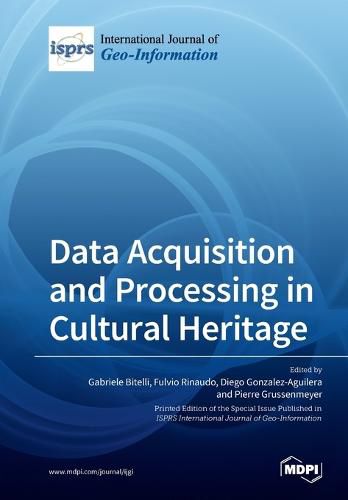Readings Newsletter
Become a Readings Member to make your shopping experience even easier.
Sign in or sign up for free!
You’re not far away from qualifying for FREE standard shipping within Australia
You’ve qualified for FREE standard shipping within Australia
The cart is loading…






This title is printed to order. This book may have been self-published. If so, we cannot guarantee the quality of the content. In the main most books will have gone through the editing process however some may not. We therefore suggest that you be aware of this before ordering this book. If in doubt check either the author or publisher’s details as we are unable to accept any returns unless they are faulty. Please contact us if you have any questions.
Advances in the knowledge of the tangible components (position, size, shape) and intangible components (identity, habits) of an historic building or site involves fundamental and complex tasks in any project related to the conservation of cultural heritage (CH). In recent years, new geotechnologies have proven their usefulness and added value to the field of cultural heritage (CH) in the tasks of recording, modeling, conserving, and visualizing. In addition, current developments in building information modeling (HBIM), allow integration and simulation of different sources of information, generating a digital twin of any complex CH construction. As a result, experts in the area have increased the number of available sensors and methodologies. However, the quick evolution of geospatial technologies makes it necessary to revise their use, integration, and application in CH. This process is difficult to adopt, due to the new options which are opened for the study, analysis, management, and valorization of CH. Therefore, the aim of the present Special Issue is to cover the latest relevant topics, trends, and best practices in geospatial technologies and processing methodologies for CH sites and scenarios as well as to introduce the new tendencies. This book originates from the Special Issue Data Acquisition and Processing in Cultural Heritage , focusing primarily on data and sensor integration for CH; documentation/restoration in CH; heritage 3D documentation and modeling of complex CH sites; drone inspections in CH; software development in CH; and augmented reality in CH. It is hoped that this book will provide the advice and guidance required for any CH professional, making the best possible use of these sensors and methods in CH.
$9.00 standard shipping within Australia
FREE standard shipping within Australia for orders over $100.00
Express & International shipping calculated at checkout
This title is printed to order. This book may have been self-published. If so, we cannot guarantee the quality of the content. In the main most books will have gone through the editing process however some may not. We therefore suggest that you be aware of this before ordering this book. If in doubt check either the author or publisher’s details as we are unable to accept any returns unless they are faulty. Please contact us if you have any questions.
Advances in the knowledge of the tangible components (position, size, shape) and intangible components (identity, habits) of an historic building or site involves fundamental and complex tasks in any project related to the conservation of cultural heritage (CH). In recent years, new geotechnologies have proven their usefulness and added value to the field of cultural heritage (CH) in the tasks of recording, modeling, conserving, and visualizing. In addition, current developments in building information modeling (HBIM), allow integration and simulation of different sources of information, generating a digital twin of any complex CH construction. As a result, experts in the area have increased the number of available sensors and methodologies. However, the quick evolution of geospatial technologies makes it necessary to revise their use, integration, and application in CH. This process is difficult to adopt, due to the new options which are opened for the study, analysis, management, and valorization of CH. Therefore, the aim of the present Special Issue is to cover the latest relevant topics, trends, and best practices in geospatial technologies and processing methodologies for CH sites and scenarios as well as to introduce the new tendencies. This book originates from the Special Issue Data Acquisition and Processing in Cultural Heritage , focusing primarily on data and sensor integration for CH; documentation/restoration in CH; heritage 3D documentation and modeling of complex CH sites; drone inspections in CH; software development in CH; and augmented reality in CH. It is hoped that this book will provide the advice and guidance required for any CH professional, making the best possible use of these sensors and methods in CH.